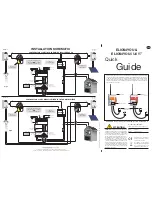
User guide
ELI
O
S
ECH001XN111-A4 – 07/2022
61
Handheld mode measurement
4.5 DPMC
4.5
DPMC
to obtain the necessary instructions about the needed equipment and the setup.
4.5.1
Paramétrage de la mesure
Once the clinical
DPMC
diagnosis type has been se-
lected its configuration window appears. It is a way of
adjusting the parameters appearing in the following ta-
ble.
Power(dBSPL)
Adjust intensity of the acoustic stimulation
Advised: between 80 and 90dB
Number of stims
Defined the number of averages needed to obtain a measurement.
Advised: at least 100 averages
Frequency (Hz)
Stimulation burst frequency
Advised: 1000 Hz with variance of ±50
Hz
depending on the surround-
ing disturbing electromagnetic frequencies
Connected stimulator
To see which stimulator is connected and switch between the two audio
output
Left/Right
Used for selecting the
ear or ears
to be tested (if both ears are selected,
the test start on the left ear).
After selecting the ear and connecting the E
CHO
-
DIF
, the "
Start
" and "
Rejection
" buttons are activated. The central
rectangle displays the impedance value measured on the electrodes:
V+
V+
and
V-
in reference to
REF
.
The impedance values must be as small and well bal-
anced as possible to guarantee measurement quality.
As soon as the impedances are correct, calibrate rejection. This is an essential stage which must be carried out with
the greatest care possible. The purpose is to define the average muscular activity level of the patient at rest. Click on
"
Rejection
" to open the configuration window for this parameter.
The time signal appears on the screen. The indicator
light at the top left indicates whether the signal has
reached the rejection threshold (
◼
= threshold reached,
◼
= signal below threshold). The rejection level is de-
termined in %. The higher this percentage is, the more
the rejection is permissive. The dark area in the middle
of graph indicates the zone where the device does not
trigger rejection. It can be adjusted manually with the
+/- controller or automatically by clicking on "
Auto
".
The icon of a floppy disk at the bottom right of the screen is used for recording the parameters defined above.
They then become the default parameters for this type of measurement.
If value
V-
is greater than 7kΩ, wipe the patient’s forehead again and reattach new electrodes.
If value
V+
is greater than
7kΩ, check that the gold-plated electrode is inserted properly into the patient's ear
and add 1 or 2 drops of physiological serum to the ear canal.








































